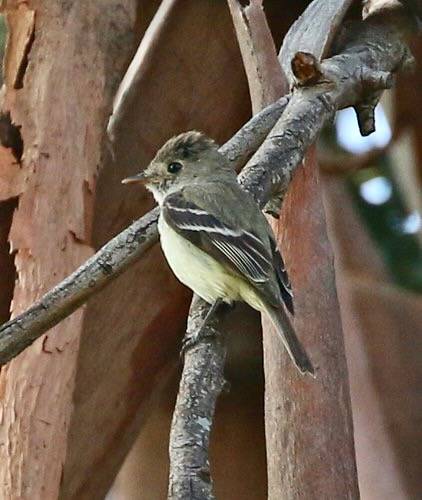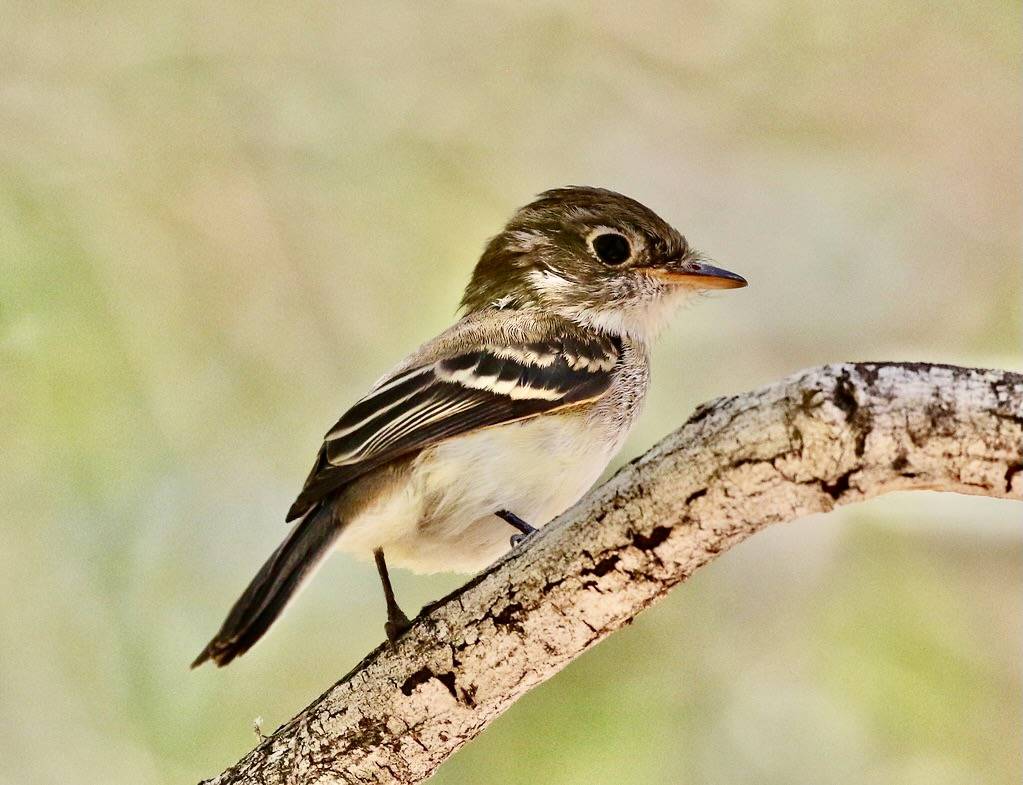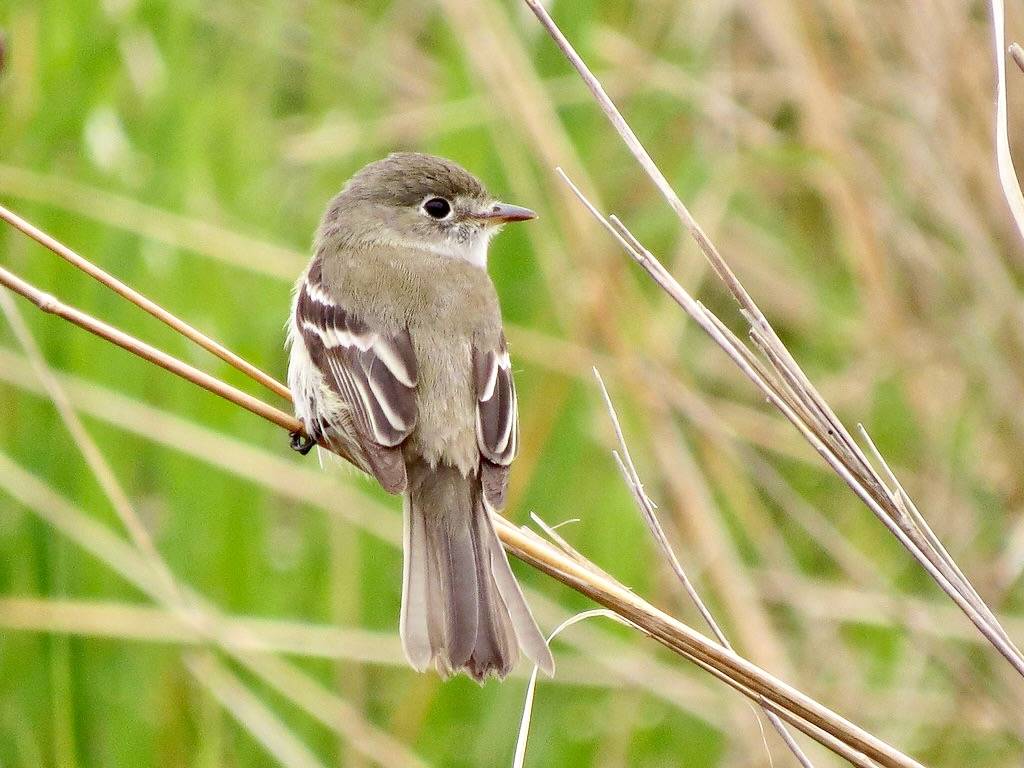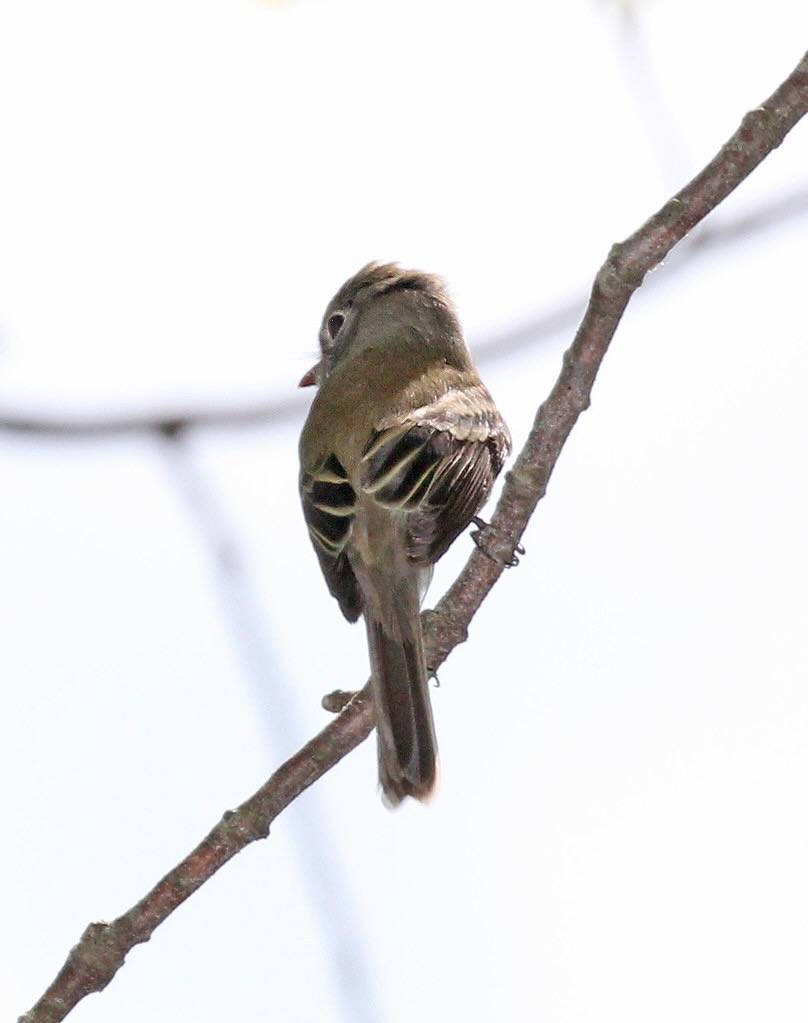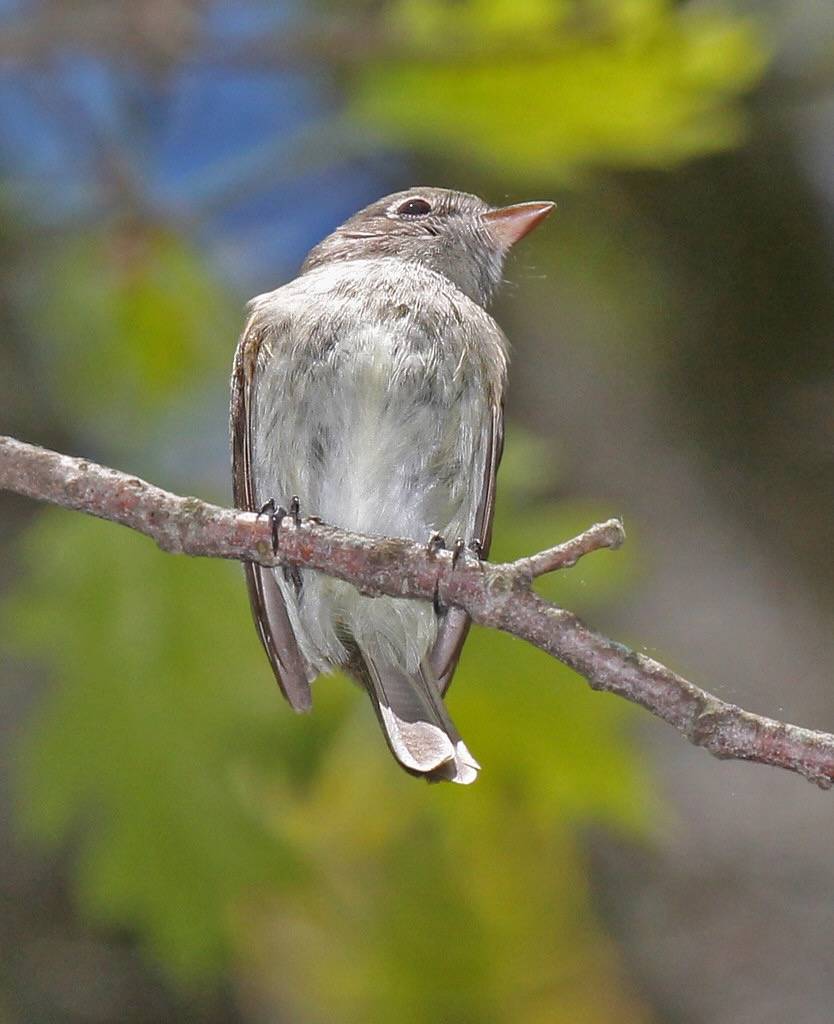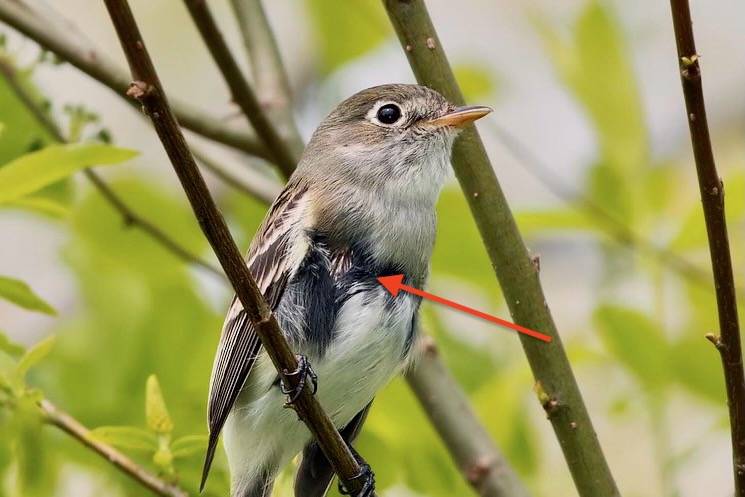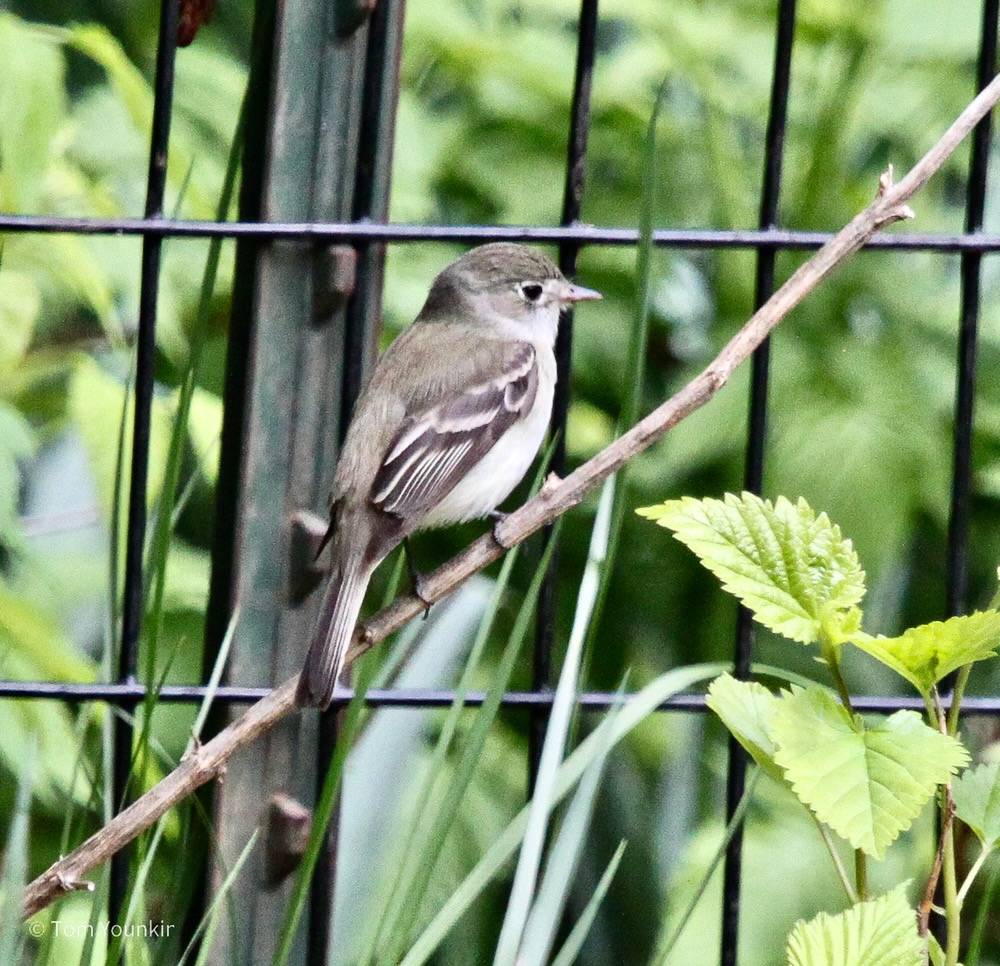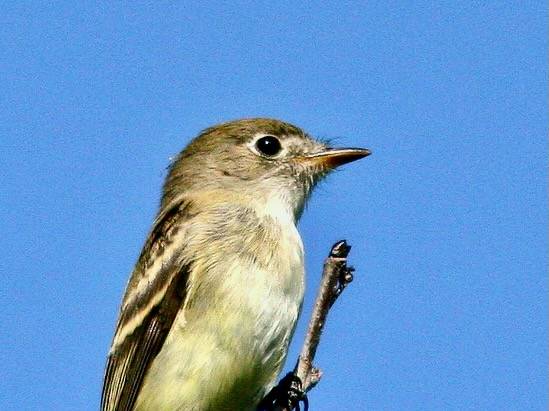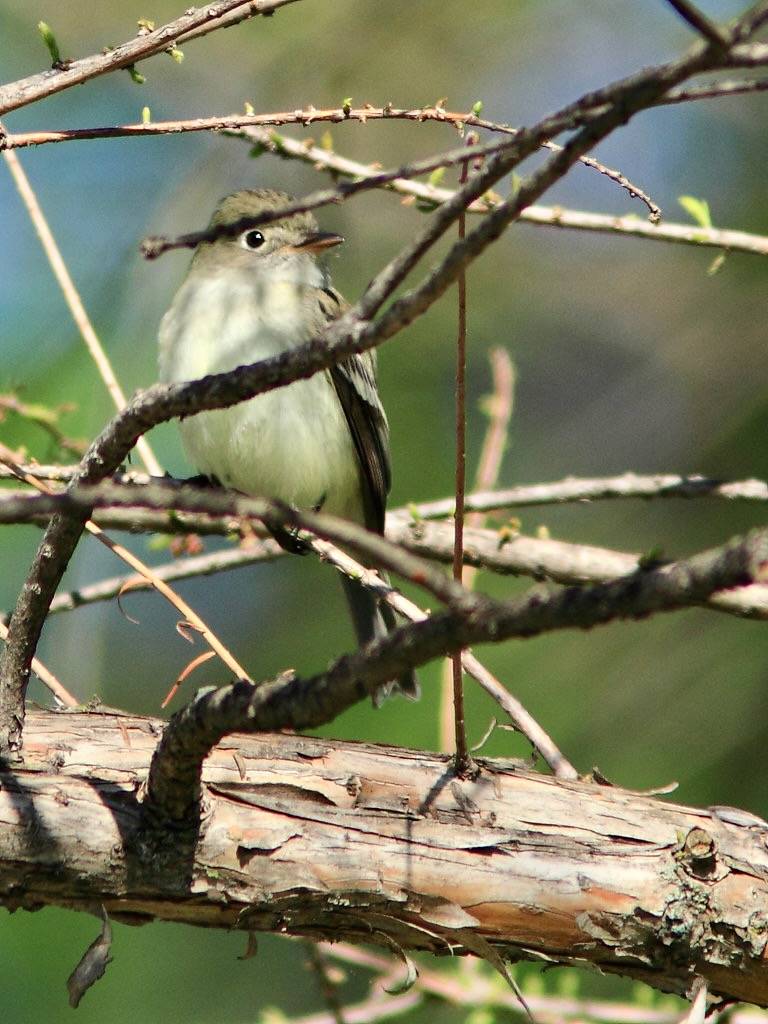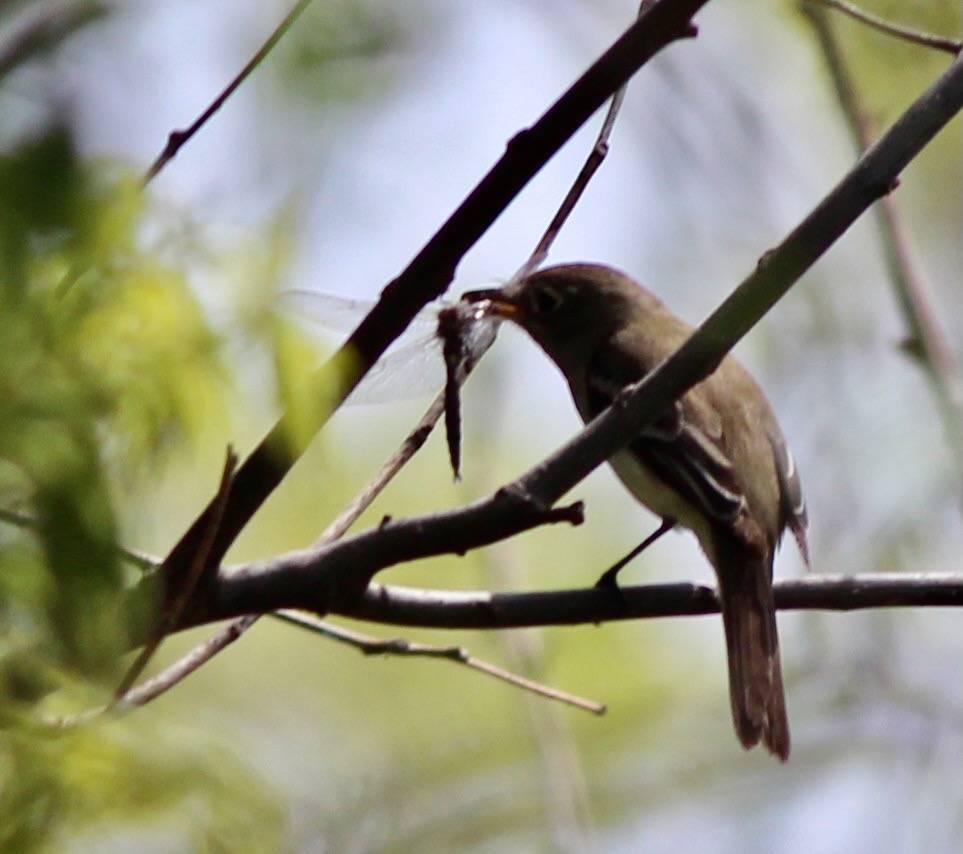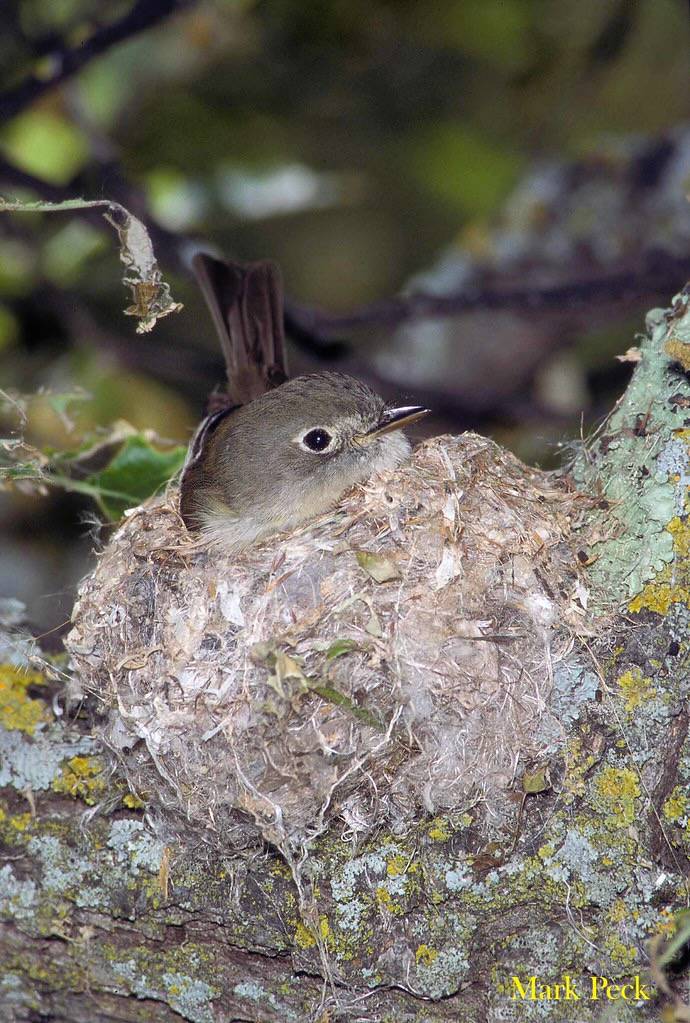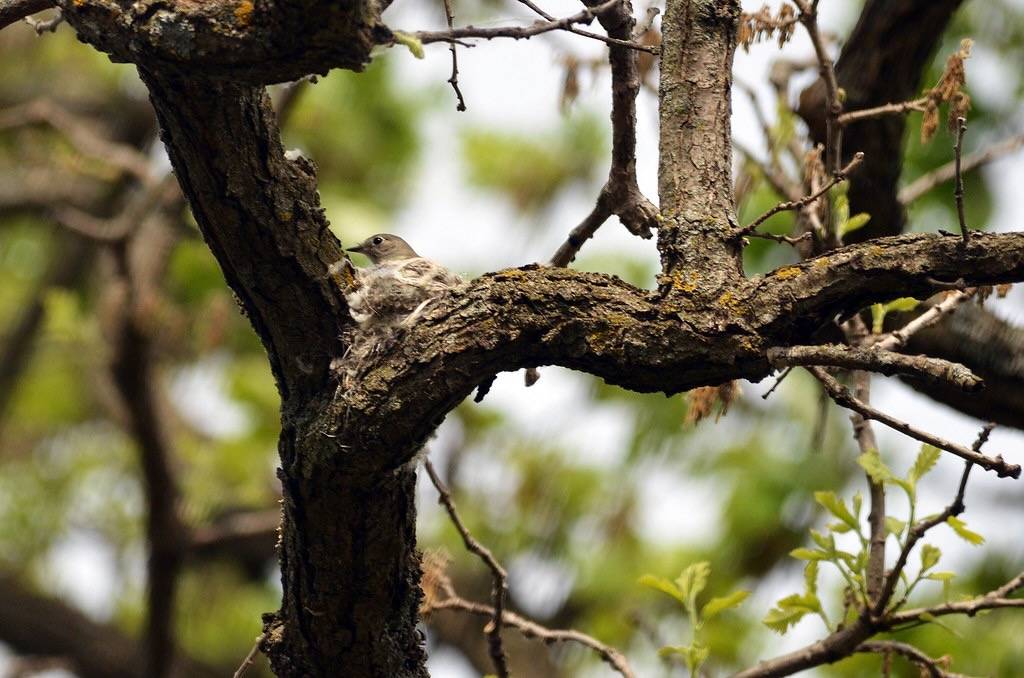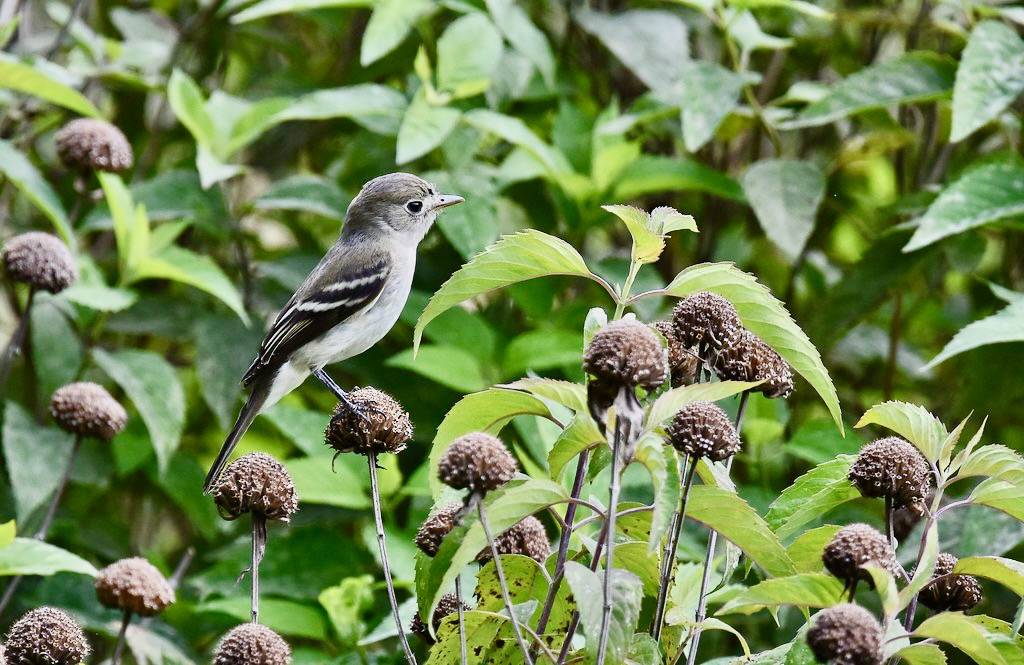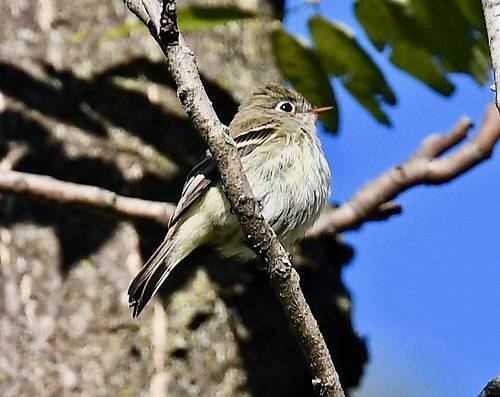Least Flycatcher
The Least Flycatcher has only been recorded once at Salter Grove in May 2020 along the Marsh Trail. It was perched on a low branch along the Marsh Trail, intently scanning its surroundings.
Identification was based on its small size, large-looking head, thin tail, two clear wing bars, and its bold eyering. It is quiet during migration but its "che-BEC" call during the breeding season would set it apart definitively from the other Empidonax flycatchers, which are all confusingly similar in appearance.
Both its scientific and common names provide helpful information about the Least Flycatcher. Its Latin name, minimus indicates that it is the smallest in the genus Empidonax that it shares with 10 other flycather species. Its common name identifies how it feeds--by catching flies, and in fact other flying insects as well. If only all organisms have such easily decipherable and descriptive names!
Imagine the keen eyesight and aerial acrobatics required in spotting approaching flying insects and then snatching them in midair with nothing more than a beak. Targeted prey include winged ants, beetles, dragonflies, flies and midges. When that gets tiresome, caterpillars, grasshoppers, and spiders are picked off leaves.
It prefers to nest in semi-open areas within or on the edge of deciduous and mixed forests in southern Canada and the northern United States. Shrubby fields are acceptable if there are nearby trees with suitable perches.
The female builds the small cup nest with animal hairs, plant fibers and spiderwebs on a horizontal branch, usually near the nests of other Least Flycatchers. At the height of the breeding season an interested observer can easily track down these nesting neighborhoods inside a forest by following the unceasing chorus of "che-BEC, che-BEC ... che-BEC. "
The Least Flycatcher occurs in habitats similar to its breeding grounds during migration, as well as on its wintering grounds in Mexico and Central America. Curiously, the populations breeding in western North America always migrate eastward before continuing south. Outside the breeding season, it will supplement its usual insectivorous diet with small berries and grass seeds.

